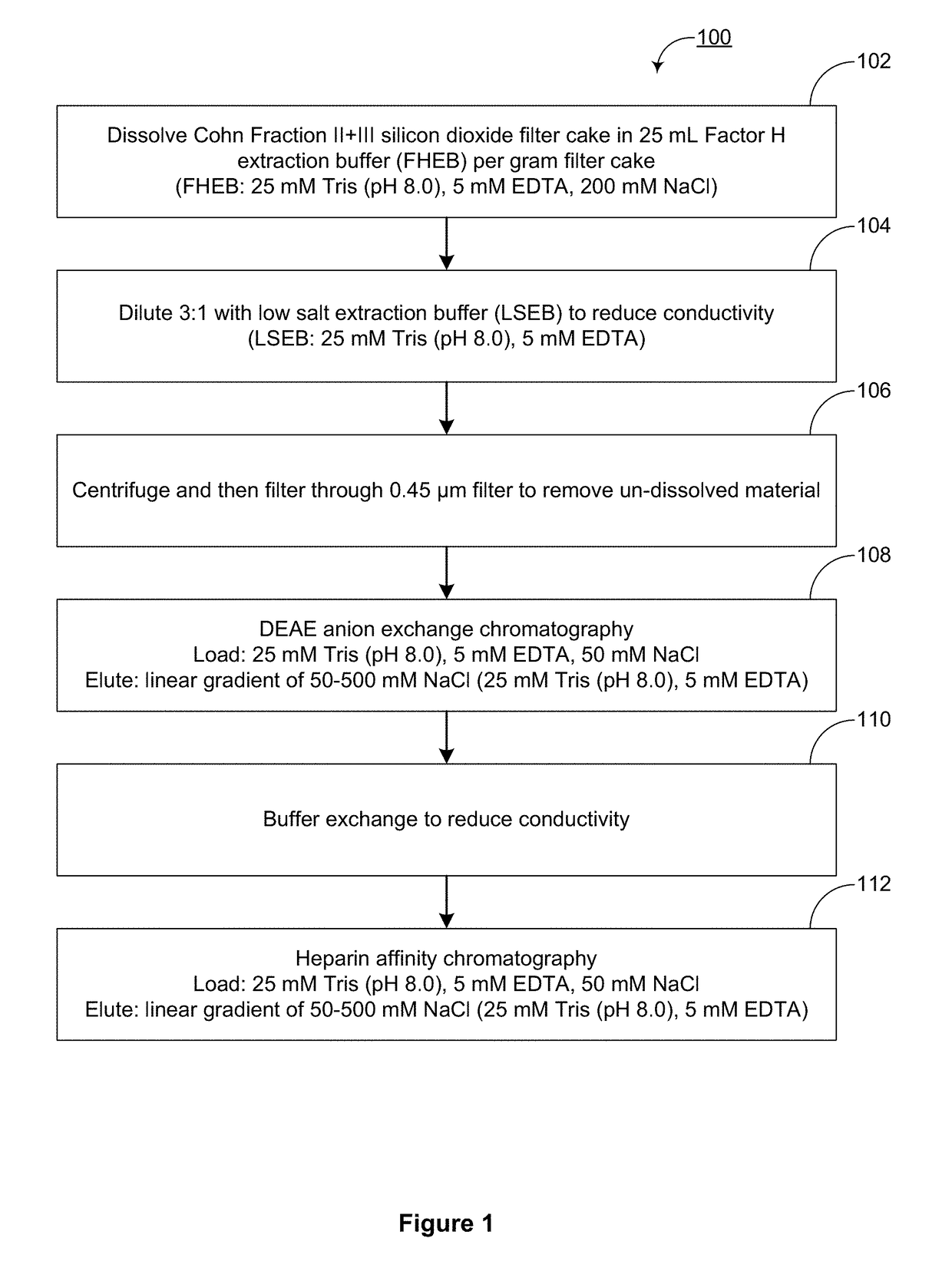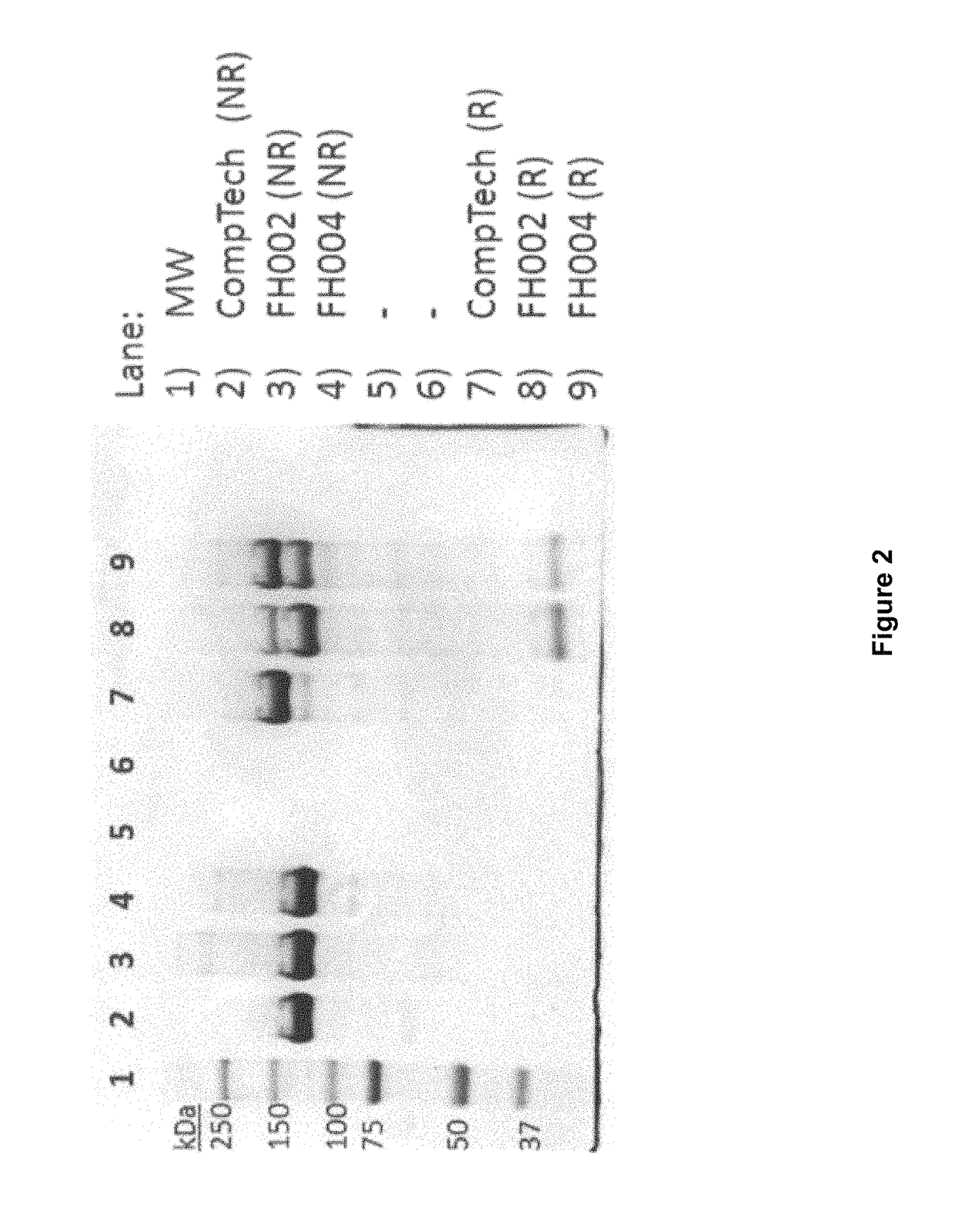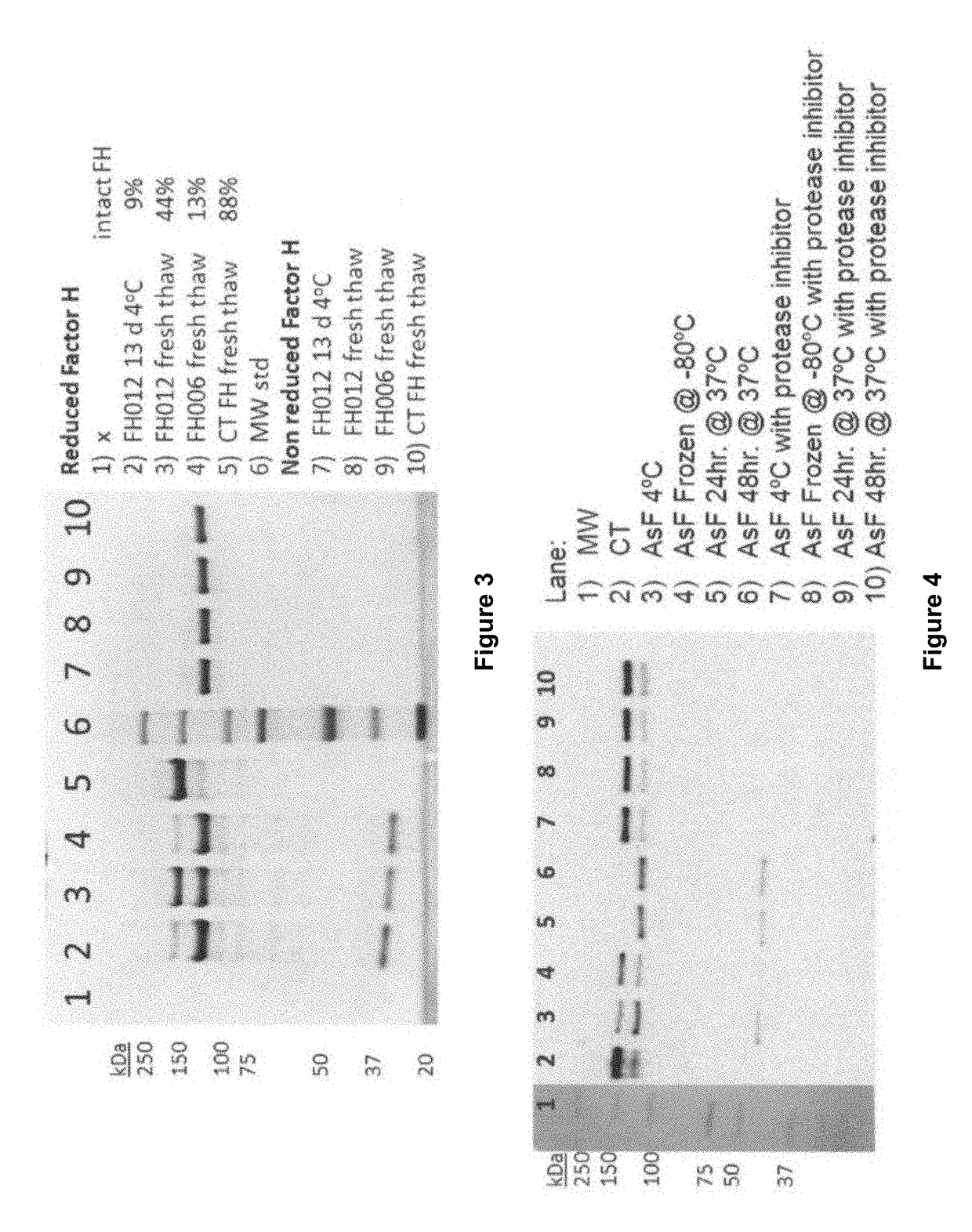Method for producing factor H from a plasma precipitation fraction
a technology of plasma precipitation and factor h, which is applied in the direction of peptide/protein ingredients, peptide sources, immunological disorders, etc., can solve the problems of limited commercially available blood products, shortage of raw human plasma for the manufacture, and inability to increase the supply of plasma-derived products, etc., to reduce amidolytic activity and proteolytic clipping
- Summary
- Abstract
- Description
- Claims
- Application Information
AI Technical Summary
Benefits of technology
Problems solved by technology
Method used
Image
Examples
example 1
ion of Factor H from Cohn Fraction II+III Silicon Dioxide Filter Cake
[0322]As reported in U.S. Pat. No. 8,304,524, Factor H can be purified from Cohn Fraction II+III silicon dioxide filter cake, a byproduct of the process used to manufacture pooled human immunoglobulin G compositions. The method used for Factor H purifications from Cohn Fraction II+III silicon dioxide filter cake in U.S. Pat. No. 8,304,524 is outlined as method 100 in FIG. 1. Briefly, method 100 includes: dissolving (102) the filter cake to extract Factor H, reducing the conductivity (102) of the dissolved solution, centrifuging and filtering (106) to clarify the dissolved solution, enriching Factor H (108) by DEAE anion exchange chromatography, reducing the conductivity (110) of the DEAE eluate, and enriching Factor H (112) by heparin affinity chromatography.
example 2
Characterization of Factor H Purified from Fraction II+III Silicon Dioxide Filter Cake
[0323]During the purification of Factor H from Cohn Fraction II+III silicon dioxide filter cake, as described in Example 1, it was noticed that under reducing conditions, e.g., conditions that eliminate disulfide bonds, purified Factor H resolved as two major bands during SDS-PAGE analysis, suggesting that Factor H was being proteolytically clipped (e.g., the Factor H polypeptide backbone was being broken at a discreet location). Due to the extensive network of disulfide bonds that stabilize the tertiary structure of Factor H, this proteolytic clipping was not observed under non-reducing conditions.
[0324]For example, the SDS-PAGE gel reproduced in FIG. 2 shows that under non-reducing condition (NR), the migration pattern of Factor H purified from Cohn Fraction II+III silicon dioxide filter cake (FH002 and FH004), as described in Example 1, is indistinguishable from the migration pattern of a plasma...
example 3
ization of Proteolytic Activity in Factor H Compositions Purified from Fraction II+III Silicon Dioxide Filter Cake
[0325]The source of the observed proteolytic clipping of Factor H in compositions enriched from Cohn Fraction II+III silicon dioxide filter cake was further investigated. An experiment testing the stability of Factor H upon incubation at 4° C. for an extended time demonstrated that Factor H compositions purified from Cohn Fraction II+III silicon dioxide filter cake (lots FH002 and FH004), as described in Example 1, contained proteolytic activities. Briefly, an aliquot of Factor H isolated from Cohn Fraction II+III silicon dioxide filter cake (lot FH012) was incubated for 13 days at 4° C. The structure of the incubated Factor H (FH12 13 d 4° C., lane 2) is compared in FIG. 3 to the structure of: Factor H from the same purification lot (FH012 fresh thaw, lane 3); Factor H from an equivalent lot purified from Cohn Fraction II+III silicon dioxide filter cake (FH006 fresh tha...
PUM
| Property | Measurement | Unit |
|---|---|---|
| conductivity | aaaaa | aaaaa |
| conductivity | aaaaa | aaaaa |
| conductivity | aaaaa | aaaaa |
Abstract
Description
Claims
Application Information
 Login to View More
Login to View More - R&D
- Intellectual Property
- Life Sciences
- Materials
- Tech Scout
- Unparalleled Data Quality
- Higher Quality Content
- 60% Fewer Hallucinations
Browse by: Latest US Patents, China's latest patents, Technical Efficacy Thesaurus, Application Domain, Technology Topic, Popular Technical Reports.
© 2025 PatSnap. All rights reserved.Legal|Privacy policy|Modern Slavery Act Transparency Statement|Sitemap|About US| Contact US: help@patsnap.com



